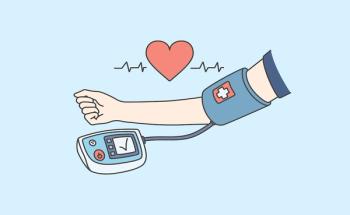
Muscle-Directed Therapy Apitegromab Meets Primary End Point in Phase 3 SAPPHIRE Trial of SMA
Key Takeaways
- Apitegromab met the primary endpoint in the SAPPHIRE trial, showing significant motor function improvement in SMA patients compared to placebo.
- Scholar Rock plans to submit a biologics license application to the FDA and EU in Q1 2025 based on these findings.
Patients aged 2-21 receiving apitegromab showed clinically meaningful motor function improvements, with a favorable safety profile consistent with long-term data, as Scholar Rock prepares for US and EU regulatory submissions in Q1 2025.
This article was originally published in
Newly announced findings from the phase 3 SAPPHIRE trial (NCT05156320) showed that apitegromab (Scholar Rock), an investigational agent, met its primary end point, demonstrating a statistically significant improvement in motor function relative to placebo among patients with
The main efficacy population of SAPPHIRE included 156 patients with types 2 and 3 SMA aged 2-12 years old who were randomly assigned 1:1:1 to either apitegromab 10 mg/kg, apitegromab 20 mg/kg, or placebo by intravenous infusion every 4 weeks for a 12-month period. Using Hammersmith Functional Motor Scale Expanded (HFMSE) as the primary end point, the combined apitegromab groups demonstrated a mean difference of 1.8 points (P = .0192) relative to placebo (n = 50). Those in the 20 mg/kg group of apitegromab showed a 1.4 point mean difference vs placebo (P = .1149).
Apitegromab, a monoclonal antibody inhibiting myostatin activation by selectively binding the pro- and latent forms of myostatin in skeletal muscle, was considered safe and well tolerated, with no differences in adverse events (AEs) based on dosage. Overall, there were no study discontinuations because of AEs, and 98% (n = 185) of participants who completed the trial went on to the ongoing ONYX open-label extension study. All serious AEs observed were related to SMA, and none were assessed as related to apitegromab.
"We are thrilled that apitegromab met the primary endpoint in our Phase 3 SAPPHIRE clinical study. The results clearly demonstrate robust and clinically meaningful improvement in motor function in patients with SMA," Jay Backstrom, MD, MPH, president and chief executive officer at Scholar Rock, said in a statement.1 "At Scholar Rock, we are working with urgency to deliver the potentially transformative benefits of apitegromab to children and adults with SMA in the US, Europe, and around the world."
In the main efficacy population, a prespecified analysis of the 10 mg/kg dose group of apitegromab (n = 10) revealed an improvement 2.2 points (P = .0121) on HFMSE compared with placebo. Notably, the 10 and 20-mg/kg groups of apitegromab showed similar levels of target engagement throughout the study.
The trial also included an exploratory population patients aged 13-21 who were assigned to either apitegromab (n = 22) or placebo (n = 10). Between the 2 groups, 30% of those on active drug had at least a 3-point improvement on HFMSE vs 12.5% of those on placebo. In addition, apitegromab-treated patients started showing early splits in motor function improvement vs placebo 8 weeks after treatment initiation, with benefits observed 52 weeks out.
"The positive Phase 3 SAPPHIRE trial, along with over 4 years of TOPAZ clinical trial data, clearly demonstrate the potentially transformative benefit of apitegromab to drive clinically meaningful improvements in motor function as measured by HFMSE in a broad SMA population, where motor function would normally be expected to generally decline over time," Jing Marantz, MD, PhD, chief medical officer at Scholar Rock, said in a statement.1 "We look forward to submitting our applications to the FDA and the EMA in Q1 2025.”
Apitegromab first demonstrated its efficacy and safety as a potential treatment in the phase 2 TOPAZ trial (NCT03921528), a proof-of-concept study of SMA type 2 and 3.
The analysis population pooled the nonambulatory patients (Cohorts 2 and 3) and included patients who received either low dose (2 mg/kg) or high dose (20 mg/kg) apitegromab (inclusive of patients in Cohort 3 who switched from 2 mg/kg to 20 mg/kg in year 2). A total of 11 patients in the population had scoliosis surgery during the study and their data was excluded from any HFMSE or RULM assessments at 48 months. Using the remaining patient cohort, the mean change in RULM for the 2-21 age group (n = 22) was 3.6 points (95% CI, 2.0-5.3) and 4.5 (95% CI, 2.7-6.3) for the 2-12 age group (n = 18).
In TOPAZ, data also showed that treatment with apitegromab
For nonambulatory type 2 patients, 24-month treatment with apitegromab resulted in stabilization or continuous improvements in ADL, as demonstrated by a mean change from baseline of 3 points (n = 14) in PEDI-CAT scores and a mean change of 5 points (n = 10) in PROMIS scores. PEDI-CAT measures pediatric abilities through 3 functional domains, daily activities, mobility, and social cognition, while PROMIS measures mild subjective feelings of tiredness to debilitating, and sustained feelings of exhaustion.
References
1. Scholar Rock Reports Apitegromab Meets Primary Endpoint in Phase 3 SAPPHIRE Study in Patients with Spinal Muscular Atrophy (SMA). Scholar Rock. October 7, 2024. Accessed October 7, 2024. https://www.businesswire.com/news/home/20241007599288/en/
2. Scholar Rock reports second quarter 2024 financial results and highlights business progress. News release. August 8, 2024. Accessed October 7, 2024. https://investors.scholarrock.com/news-releases/news-release-details/scholar-rock-reports-second-quarter-2024-financial-results-and
3. New TOPAZ trial data indicate positive trends in quality of life measures over 24 months with apitegromab for nonambulatory patients with types 2 and 3 SMA. News release. Scholar Rock. October 22, 2022. Accessed October 7, 2024. https://www.businesswire.com/news/home/20221022005004/en/New-Phase-2-TOPAZ-Trial-Data-Indicate-Positive-Trends-in-Quality-of-Life-Measures-Over-24-Months-with-Apitegromab-for-Nonambulatory-Patients-with-Types-2-and-3-SMA
Newsletter
Stay ahead of policy, cost, and value—subscribe to AJMC for expert insights at the intersection of clinical care and health economics.







































